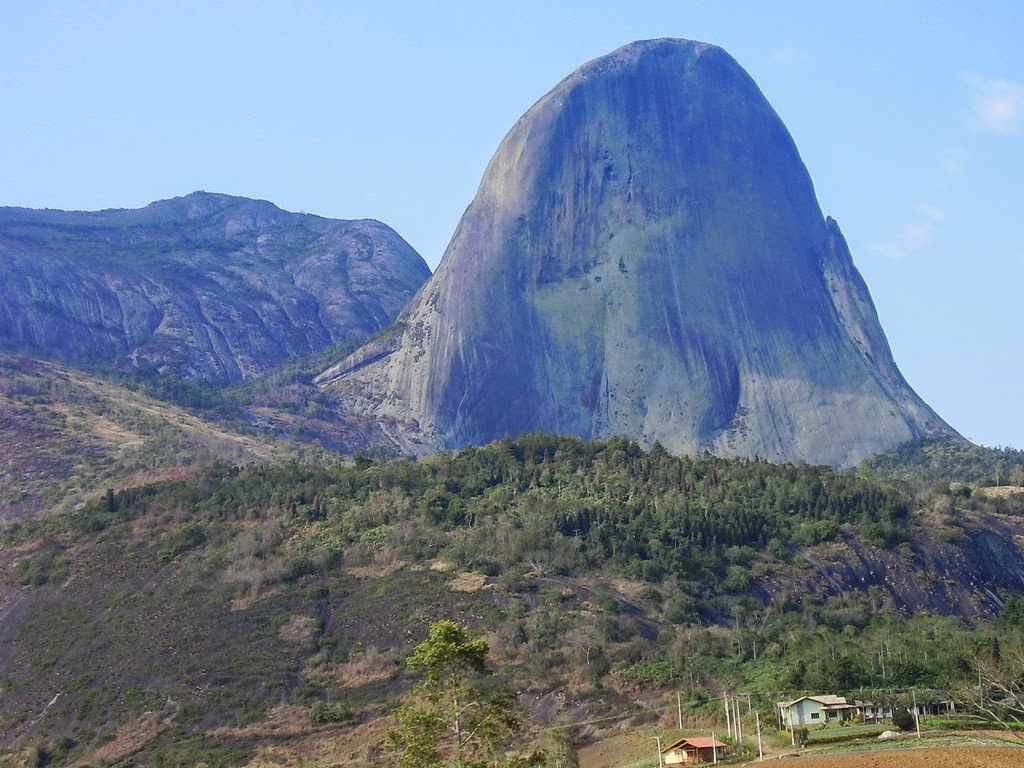 |
| The Blue Stone, in National Park of Pedra Azul (Blue Stone) |
Espírito Santo, directly translated to “Holy Spirit” in English, is a Brazilian state situated in the southeast of this intriguing South American country. Because of its extensive coastline, this state is well known for its sand dunes, ports, and beaches. It is also acclaimed for the forró, a unique style of dance.
Tourism attractions in Espírito Santo include:
• Guarapari (renowned for its curative black sand beaches)
• Jacaraípe and Manguinhos (both coastal areas)
• Domingos Martins (a spectacular mountain retreat) (source: brazilsite)
Espírito Santo is often referred to by the abbreviation "ES". Its capital is Vitória and the largest city is Vila Velha. The name of the state means literally "holy spirit" after the Holy Ghost of Christianity. With an extensive coastline (40% of the territory is on the coast), the state has some of the country's main ports, but the beaches are the most significant tourist attractions.
 |
| Canaã valley in Espirito Santo's mountains, there is on the way of Santa Maria de Jetibá. Photo wikipedia. Author: Junior Pedruzzi |
 |
| National Park of Caparaó. Photo: wikipedia |
 |
| With trails that go through natural pools and viewpoints through the Atlantic Forest, the National Park of Pedra Azul in Domingos Martins (ES) is worth a visit. The Blue Stone, main attraction, is covered with lichens that change color according to the incidence of the sun. Photo by viajeaquiabril) |
 |
| Vitória, ES. Photo Flickr by visitbrasil |
 |
| The Nossa Senhora da Penha chapel, in Old Town, is the main religious monument in the state of Espírito Santo. Besides the beautiful view of the city, the chapel guard the image of Our Lady of Penha, patron saint of the State. Beside, three rooms function as sacred museum, shop and ex-votos room. Photo by viajeaquiabril |
 |
| Vila Velha, ES. Photo wikipedia |
Vitória, the capital, is on an island, next to Guarapari, well known for its sands. In the extreme north is the Itaúnas part of the municipality of Conceição da Barra, whose sand dunes and forró are famous. Also on the coast, the typical cuisine is another attraction with the moquecas capixabas and many fruits from the ocean and seafood. In the country of the state there are many natural attractions such as the parks of Pedra Azul and Serra do Caparaó, and the Italian and German colonies.
The people born in Espirito Santos are called "Capixabas" (source: wikipedia)
In 1998, the United Nations rated Vitória as the fourth best state capital in Brazil to live in, rating cities on health, education, and social improvement projects.
WATCH THIS VIDEO ABOUT ESPIRITO SANTO:
Espírito Santo is bordered on the south by Rio de Janeiro state and on the north by Bahia. The coast has miles and miles of wonderful beaches, backed by the same spectacularly beautiful granite domes and mountains that famously frame Rio de Janeiro's landscape. Because of the long coastline, Espírito Santo's gastronomy is dominated by fish and seafood and the state is famous for its unique way of making fish and seafood moquecas - highly seasoned stews. Espírito Santo and Bahia States are both famous for moquecas, but each has its own tradition. Bahian moquecas use coconut milk seasoned with dendê oil to provide the base for the stew; in Espírito Santo the broth is based on coconut milk, tomatoes and onions. (from: flavorsofbrazil).
 |
| Fish "moqueca". Photo Flickr by visitbrasil |
 |
| Located in the Upper City, the Metropolitan Cathedral of Vitoria (ES) has neogothic style and stained glass with biblical passages. |



No comments:
Post a Comment